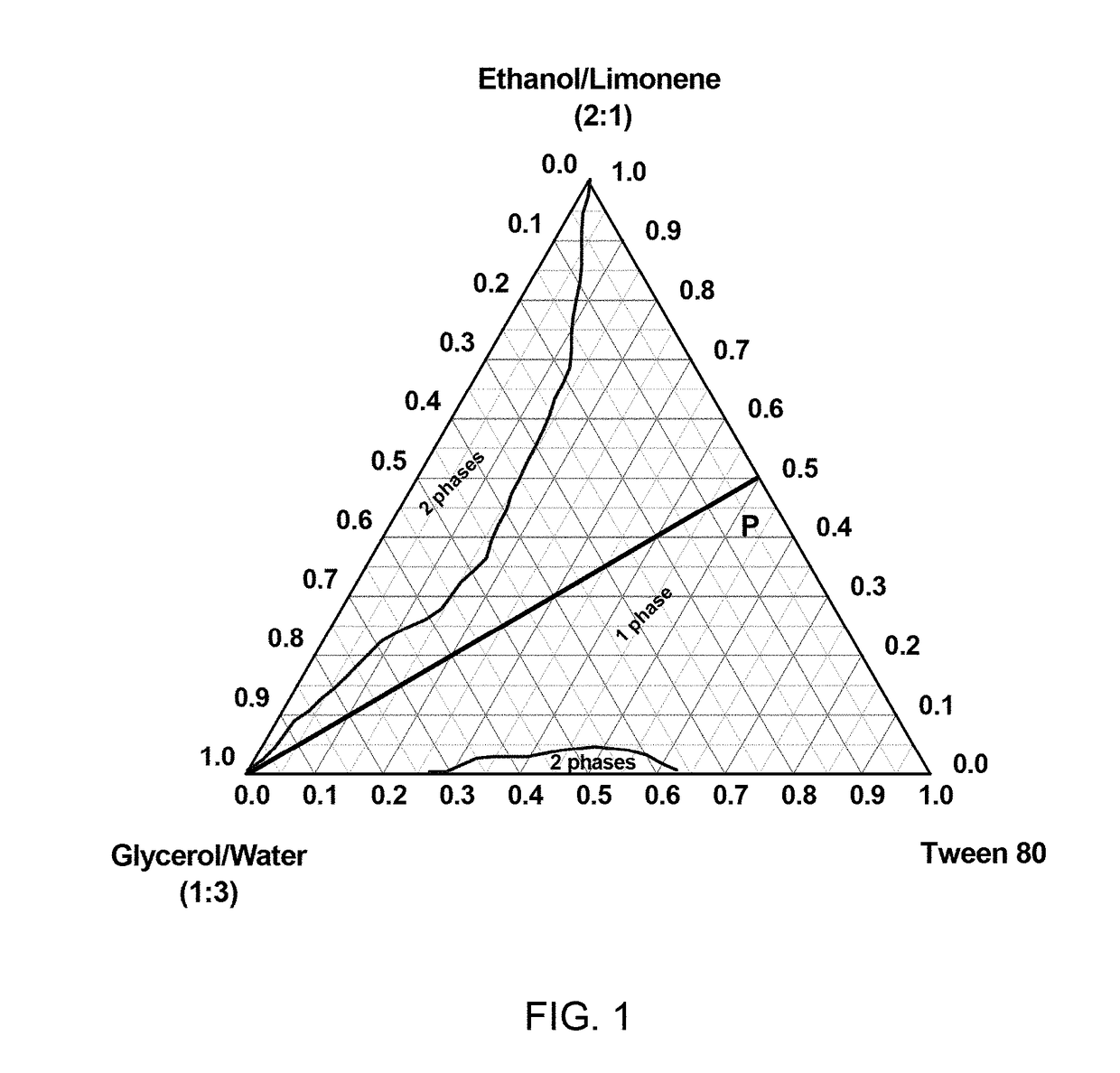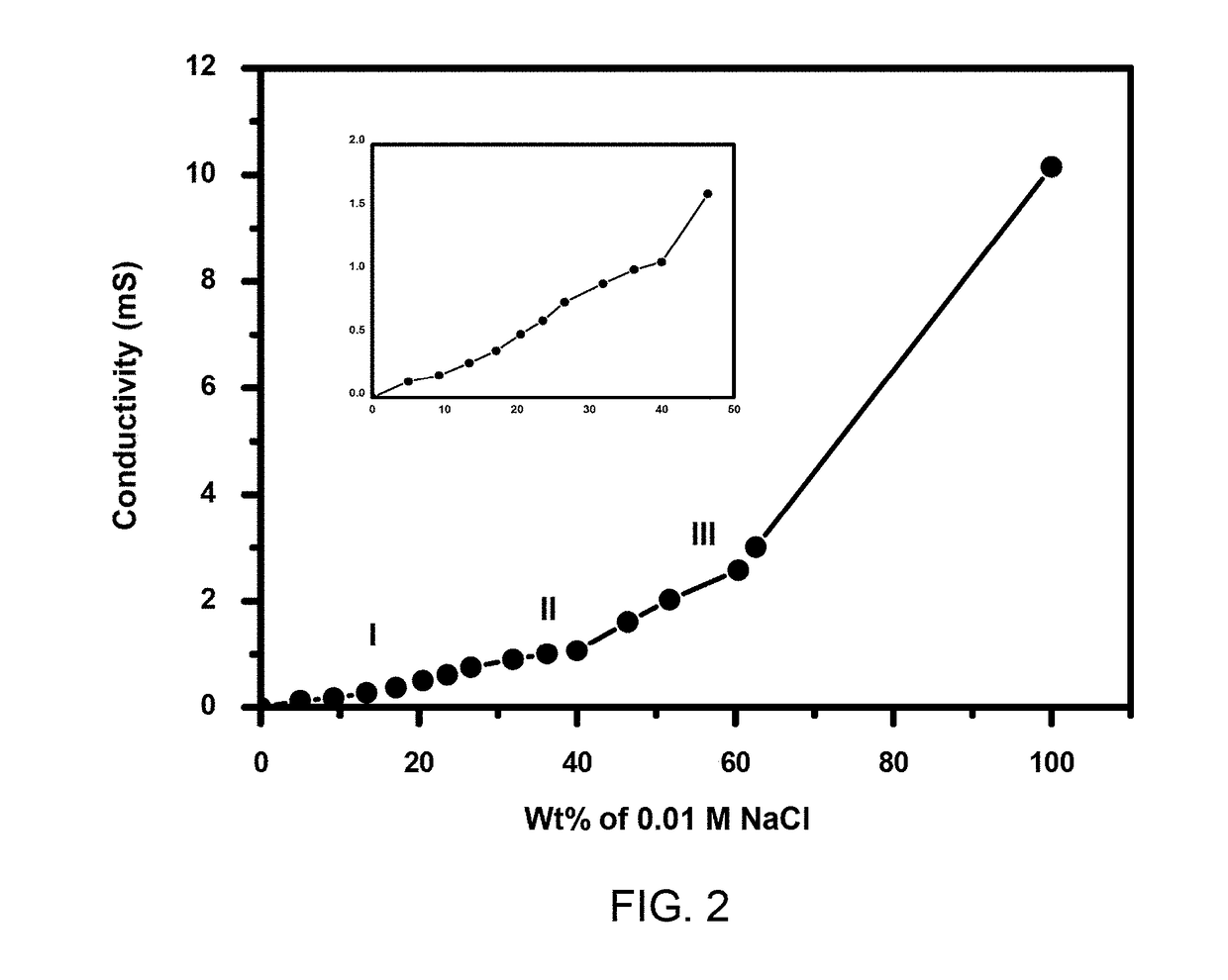Method of forming encapsulated compositions with enhanced solubility and stability
a technology of compositions and solubility, applied in the field of food grade microemulsions, can solve the problems of direct use, poor solubility, and actives that pose a challenge to most researchers, and achieve the effect of simple processing operations and easy fabrication
- Summary
- Abstract
- Description
- Claims
- Application Information
AI Technical Summary
Benefits of technology
Problems solved by technology
Method used
Image
Examples
example 1
Materials and Methods
[0051]Materials.
[0052]Polysorbate 80 (polyoxyethylene (20) sorbitan monooleate; TWEEN® 80), R-(+)-limonene, ethanol and glycerol were of food grade. All chemicals and reagents used in the analytical protocols were of analytical reagent grade. The water was double-distilled. The control carotenoid source used was a stabilized source of saponified yellow carotenoids from marigold extracts (OroGLO® 24 Dry, Kemin Industries, Inc.).
[0053]Phase Diagram and Electrical Conductivity.
[0054]The single-phase region of the microemulsion6 consisting of polysorbate 80 / ethanol / limonene / glycerol / H2O was determined systematically by titrating water to various compositions of polysorbate 80, ethanol, limonene and glycerol, in a screw-capped test tube. Each sample was vortex-mixed and allowed to equilibrate in a temperature-controlled environment at 25° C. A stock solution of water and glycerol at a constant weight ratio of 3:1 was made. The ethanol / limonene weight ratio was held c...
example 2
[0090]The objective of this example was to prepare a solid nanodispersed self-emulsifying delivery system containing bicontinuous food-grade microemulsions of polyethoxylated sorbitan ester (Tween 80), water, limonene, ethanol and glycerol with excellent solubilization capacity, as liquid phase for the delivery of bioactive carotenoids, and to evaluate the enhanced bioavailability of the carotenoids from the solid form. The bioavailability study performed in the layer trial resulted in a 2.9-fold (191%) increase in the capsanthin absorption in the bird serum and 20% increase in the capsanthin deposition in the bird eggs from the nanodispersed formulation. Furthermore, the YCF score of the eggs from the birds treated with the nanodispersed formulation compared with a current formulation showed an average score of 11.25 and 8.75, respectively. These results clearly demonstrated the excellent ability of the new solid formulation in promoting solubilization and absorption of trans-capsa...
example 3
Materials and Methods
[0110]Materials.
[0111]Tween 80, limonene, ethanol, glycerol, wheat bran and silica were of food-grade. All chemicals and reagents used in the analytical protocols were of analytical reagent grade and double-distilled water was used. A stabilized source of saponified red carotenoids from paprika extracts and Kem GLO 10 were obtained as from Kemin Animal Health And Nutrition (Asia-Pac) production.
[0112]Preparation of Nanodispersed Kem GLO 10 Dry.
[0113]A solid form of the carotenoids was prepared. Briefly, silica and wheat pollard (21.8 wt % / 26.0 wt %) were first added into a mixer. A nanodispersed carotenoid microemulsion, 52.2 wt % (as per Example 2) containing saponified caroteniod (37.2 wt %) was then added into the mixer with constant stirring at room temperature for 15 min until a homogenous mixture was obtained. The produced sample analyzed contained 12.47 g / kg of carotenoids.
[0114]Preparation of Treated Feed Meal.
[0115]The poultry layer mash feed (as per Ex...
PUM
 Login to View More
Login to View More Abstract
Description
Claims
Application Information
 Login to View More
Login to View More - R&D
- Intellectual Property
- Life Sciences
- Materials
- Tech Scout
- Unparalleled Data Quality
- Higher Quality Content
- 60% Fewer Hallucinations
Browse by: Latest US Patents, China's latest patents, Technical Efficacy Thesaurus, Application Domain, Technology Topic, Popular Technical Reports.
© 2025 PatSnap. All rights reserved.Legal|Privacy policy|Modern Slavery Act Transparency Statement|Sitemap|About US| Contact US: help@patsnap.com



